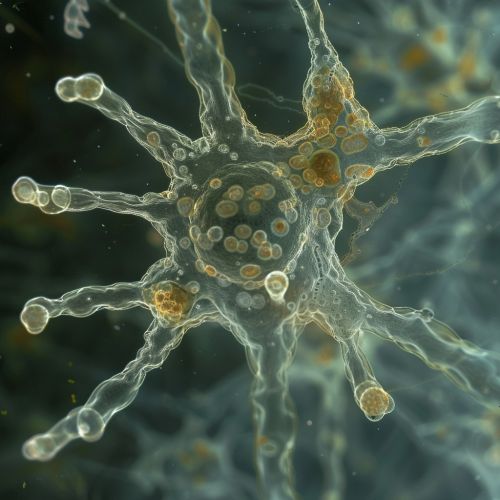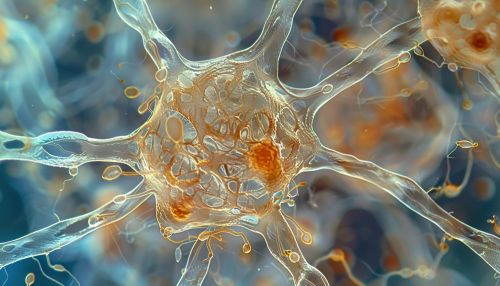Growth cones
Overview
A growth cone is a dynamic, actin-supported extension of a developing or regenerating neurite seeking its synaptic target. Its existence was originally proposed by Spanish histologist Santiago Ramón y Cajal based on static images observed through histology. Since then, the growth cone has been found to play a crucial role in the guidance of neurons during neural development and in the adult brain during learning and memory consolidation.
Structure
The growth cone has a characteristic "hand-like" shape with finger-like extensions called filopodia (singular: filopodium) and sheet-like extensions called lamellipodia (singular: lamellipodium). The central region of the growth cone, known as the C-domain, contains organelles and microtubules, while the peripheral region, or P-domain, contains a dense network of actin filaments. The transition zone, or T-zone, separates these two domains.


Function
The primary function of the growth cone is to explore the environment to find the correct path to the target cells. The growth cone does this through a process called axon guidance, which involves the detection of attractive and repulsive guidance cues in the environment. These cues can be either diffusible molecules, such as netrins, semaphorins, and ephrins, or substrate-bound molecules, such as cell adhesion molecules (CAMs) and extracellular matrix (ECM) proteins.
Growth cone navigation involves the integration of multiple signals and the conversion of these signals into changes in the cytoskeleton. This process, known as signal transduction, involves a variety of molecules, including G proteins, protein kinases, and phosphatases. The activation of these molecules leads to changes in the actin and microtubule cytoskeletons, resulting in growth cone turning and axon extension.
Growth Cone Collapse
In certain situations, the growth cone can undergo a process known as collapse. This involves a rapid retraction of the filopodia and lamellipodia and a cessation of forward movement. Growth cone collapse is typically induced by repulsive guidance cues, such as semaphorins and ephrins, and is thought to play a crucial role in preventing neurons from innervating inappropriate targets.
Role in Neural Development
During neural development, the growth cone plays a crucial role in the formation of the nervous system. It is responsible for guiding axons to their correct targets, thereby establishing the wiring of the nervous system. This process, known as axon pathfinding, is crucial for the correct functioning of the nervous system.
Role in Learning and Memory
In the adult brain, the growth cone is thought to play a role in learning and memory. This is because the formation of new synapses, a process known as synaptic plasticity, involves changes in the structure of dendritic spines, which are thought to be mediated by growth cone-like structures.
Pathological Conditions
Abnormal growth cone function has been implicated in a variety of pathological conditions, including neurodevelopmental disorders, neurodegenerative diseases, and nerve injury. For example, mutations in genes involved in growth cone guidance have been linked to conditions such as autism and schizophrenia. In addition, growth cone collapse is thought to contribute to the lack of regeneration in the central nervous system following injury.
